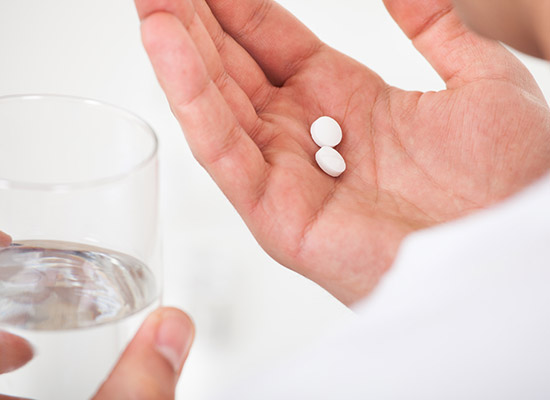Your pancreas is located in your upper abdomen and is an important part of your digestive system. Some of the functions of your pancreas include Insulin production and glucose control in addition to exocrine (digestive juice) secretion.

Effects of a non-functioning pancreas
When the pancreas does not function effectively, there is a reduced or absence in the production of Insulin. This condition is called Type 1 Diabetes or DM.
- Type 1 Diabetes usually occurs in children and young people under the age of 30.
- The condition is caused when the body’s immune system destroys the cells in the pancreas that makes insulin.
- You need to have injections right away from the time the disease commences
Diseases resulting in non-function
Diabetes and rarely exocrine failure with malnutrition secondary to malabsorption.
Treatments
Treatments for non-functioning pancreas
The most common treatment for type 1 diabetes include:
- Taking insulin injections several times a day or using the insulin pump
- Monitoring blood sugar levels several times a day
However, some people with diabetes benefit from a pancreas transplantation. A transplant of the pancreas is usually reserved for someone with serious complications. Some of the complications include
- Type 1 Diabetes that cannot be controlled with standard treatment
- Frequent insulin reactions
- Consistently poor blood sugar control
- Severe kidney damage

Organ Donation
Source and number of donors
Most organs are received from deceased organ donors. Donors are generally previously fit, not overweight people with normal glucose and renal function. They are usually adults, confirmed brain dead and under 45 years of age. Older donors are rarely used as the graft outcomes tend to be poor.
Donor operation
The Pancreas is retrieved along with the Liver and separated on the back table. Normally the Pancreas is allocated with the left kidney to a Type 1 Diabetic recipient with renal failure. The Pancreas, Left Kidney and length of donor blood vessels are transported to the recipient Hospital.
Transplant recipient selection
These are type 1 Diabetics, with no evidence of coronary artery disease, or active infection or cancer. They must be able to comply lifelong with medications and follow up and are normally under 50 years of age, although some fit patients above this age have been transplanted. Recipients are either on dialysis, or impending dialysis when listed actively.
Recipient preparation for transplant
If you are in need of a transplant, you will be thoroughly evaluated. Thorough medical and surgical assessments will be carried out to exclude any underlying infection, malignancy or additional diseases that will complicate the procedure.
The surgical operation
The Pancreas requires some surgical reconstruction, using donor blood vessels to enable it to be then Transplanted. Three joins are performed on two arteries and a vein, prior to commencing the recipient surgery. This so called “back table” surgery is crucial and takes 1.5 to 2 hours in duration.
The recipient surgery is often performed using a lower midline incision, with the Pancreas joined to the artery and vein on the right side of the pelvis and then the Kidney joined to the vessels on the left.
The Pancreas produces digestive juices which are removed by joining the loop of bowel at the head of the Pancreas (called the duodenum) to a loop of small intestine. The Insulin produced by the Pancreas drains directly into the blood stream and it is this function that we are wanting.
Immediate recovery from operation and discharge from hospital
Immediately after surgery, you’ll spend 24-48 hours in intensive care. You’ll be in transplant care for the rest of your hospital stay. You may be able to get out of bed the day after surgery.
Hospital recovery is usually between 7 – 10 days. In some cases, the stay can last up to weeks if there are complications associated with the transplant.
Immune suppression and other medications
After your transplant, you will immediately start taking a host of medications to keep your new organ healthy. These medicines will keep your immunity low, so that your body does not reject the new kidney. Over time, the doses of the medicines will drop but you must take them throughout the life of your transplant.
Ensure you always have a ready supply of medications especially when you are travelling because these medications are not available easily. Ensure you carry a doctor’s letter if travelling overseas. In many instances, you will need to keep track of all your medication spending through the Pharmaceutical Benefits Scheme. Once you reach a certain limit each year, the price of the medicines will be significantly reduced or free (e.g. for those with a Health Benefits card or a Pensioner Concession Card).

Recovering at home
After going home, you will initially be required to attend clinic daily and then twice per week. At 4 weeks, you will need to undergo a biopsy to exclude any rejection from the kidney and if this is ok, then you can return to more local follow up.
Stages of returning to activity, including work
No heavy lifting for 6 weeks, hence work in this initial period is difficult around the regular clinic attendance. After 6 weeks with less frequent follow up, return to normal work would be encouraged.
Healthy eating
While on immunosuppression medication, especially high doses of prednisone, you may gain a considerable amount of weight if you are not careful. Hence a focus on healthy eating and exercise is very important. It is possible to gain so much weight, that you can become resistant to Insulin, ie a Type 2 Diabetic. Hence diet and exercise are an important part of recovery and lifestyle, although no specific restrictions apply and sweet foods can be enjoyed in moderation
Driving after Transplant Surgery
You may wish to resume driving as soon as possible after your surgery. You must check with your doctor to clarify when it is safe to drive. You can resume driving after three to six weeks post-transplant depending on the type of surgery you have had and the size of the wound. Before driving, ensure that your wound is healing well, that you are alert and not fatigued, no longer experiencing significant pain or taking medications that can cause drowsiness.
For information on assessing fitness to drive, please visit the website www.austroads.com.au . The guidelines on this website outline the responsibility drivers, health professionals and the licensing authorities. The rules for driving are very clear and are set out to protect you, the transplant doctors and the general public.
What to avoid
Smoking significantly increases the risk of clotting off the blood supply of the Pancreas, not to mention the arteries to the Heart and Brain. You are strongly advised not to smoke.
Respect your new organ
Never forget that someone has had to die to give you the organs, so always look after yourself and look after your new pancreas and kidney Think about writing to your donor family (through the Red Cross Bereavement Coordinator) making sure that you keep your comments anonymous and do not identify yourself.
Make the absolute most out of your new life, off Insulin and not on dialysis.

Acknowledgements
This information is intended for educational purposes only. Transplant Australia acknowledges that each patient experience is different and does not provide this information as a substitute for medical advice. Please contact your transplant unit or doctor if you need medical advice.
Transplant Australia gratefully acknowledges the contribution of Dr Henry Pleass (Professor of Surgery at Westmead Clinical School, University of Sydney) in developing and reviewing this material.

